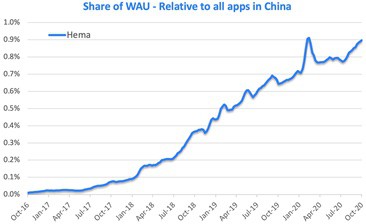China has rapidly transformed in recent years, becoming a leader in technology innovation and a major player in global markets. Last week, AlphaSense hosted Natalie Cade, Head of UBS China 360, to discuss the technology, retail, and payments innovations driving China’s rapid economic growth — and how these innovations will impact the global economy.
For more analysis from Natalie Cade and the UBS Research team, secure a free trial of AlphaSense or login to your account. Watch the replay of this briefing by visiting the Expert Briefing Series page.
Key Technologies are Emerging Out of China
To begin, Cade noted that while trends in the Chinese economy are rapidly accelerating, the UBS economics team forecast China’s economy will slow to around 4.5% growth a year on average over the next decade, downfrom the 7% growth China saw as recently as 2017. Still, UBS expects China to continue to contribute 30% of global growth, and key technologies are emerging to set the stage for a new decade of Chinese consumer growth.
UBS China 360 sees 5G, AI, and the Internet of Things as three of the critical tech drivers of this decade, and in their view China could be well-positioned to be a beneficiary of these technologies converging for a few key reasons:
- China has the largest amount of AI data globally and roughly 7 billion IoT connections. China could also be one of the first countries to complete a full 5G rollout.
- China is well-positioned from an R&D perspective, with its R&D expenditure as a percentage of GDP having already surpassed the EU, and approaching the OECD average. China also already has a leading edge in tech infrastructure and UBS expects that for every dollar Chinese telecom operators earn, they will likely spend twice as much in aggregate as their US and Japanese counterparts.
- Chinese consumers are some of the most enthusiastic in the world. For example, they tend to use their mobile phone handset for a shorter period before upgrading it than consumers in the US, UK, Germany, and Japan.
- China has a steady (and rising) source of funding, with about 45% of startup investments in China going towards TMT, which is one reason for China’s high levels of R&D.
All of this means that while China is only 9th on UBS’s global innovation ranking, it is moving up the ranks faster than any other country.
What Does The Future Hold?
UBS expects that in the next seven to ten years, we could see China become a world leader in innovation. While tensions between the US and China could hinder innovation, Cade points out that these tensions are also forcing China to become more self-reliant on its technology, as exemplified by the New Infrastructure Initiative that China adopted in response to the COVID-19 Pandemic.
By UBS China 360’s estimates, 40-50% of the plan’s investments will go towards 5G, AI & IoT related projects. In total, the government plans to channel some $140 billion a year into intelligent infrastructure. China’s technology supply chain is the weakest in terms of its semiconductor supply. Still, it prioritizes investments in semiconductors to avoid reliance on the US, which could be detrimental if trade tensions between the two countries continue.
How Will China’s Growth Impact the Global Economy?
China’s online giants have been leveraging big data and AI to expand their ecosystems into the offline world. In response, China’s traditional retailers have been digitizing to counter the disruption and to improve efficiencies in an ever-competitive market. Against this backdrop, China’s retail landscape has been shifting towards a ‘new retail’ model – essentially an omni-channel approach. Alibaba’s Hema brand revolutionized this concept by not only combining its online and offline platforms, but by offering unique in-store experiences.
China’s digital retailers have also begun to use AI to target smaller Chinese cities, where commerce is currently driven by millions of mom-and-pop shops, which are fragmented and lack digital infrastructure and efficiency. Historically, brands have had little way to connect with these customers, but using AI and other technologies, China’s internet giants have begun to help brands connect directly with mom-and-pop stores, significantly increasing their market share outside of China’s big cities.
Source: UBS Evidence Lab, Quest Mobile | New retail platforms have been gaining relevance
These technological innovations are acting as a driver of consumption in China. China has become a testing ground for global companies to experiment with technology and innovations stemming from China are also leading to innovation in other countries. China’s path to digital transformation offers valuable insights into how conventional retailers could become more digitally competitive. It also offers a glimpse into how traditional stores could evolve not only in China but also in developed regions like the US and Europe, where data monetization and digitization are also emerging as key themes for retailers.
What other emerging technologies in China may impact the global economy? Read the full report by UBS in AlphaSense — log in or unlock free trial access now. To access the webcast replay, please explore our expert briefing series.




